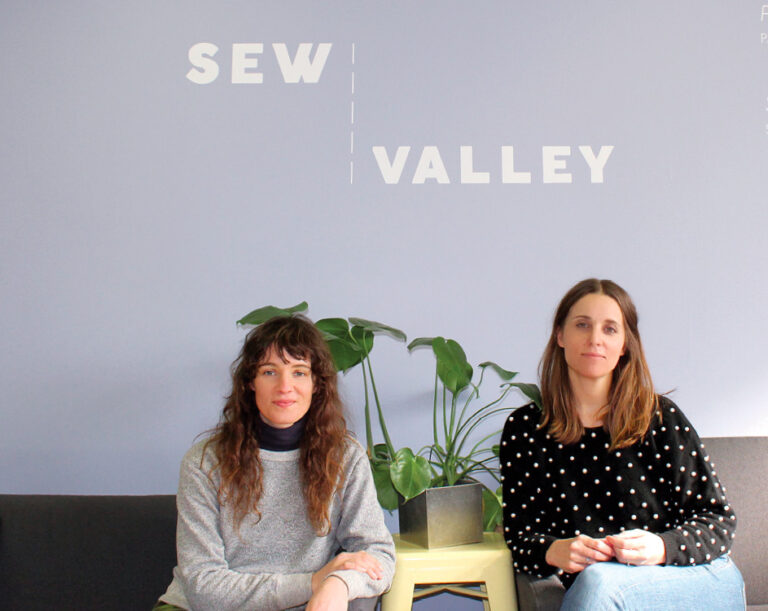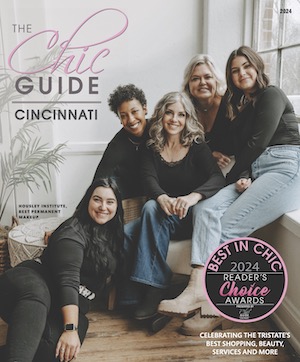Nonprofit Sew Valley looks to support designers and apparel manufacturers in Greater Cincinnati
When Rosie Kovacs and Shailah Maynard launched Sew Valley in 2018, they were doing their bit to revitalize the apparel-manufacturing industry in Greater Cincinnati.
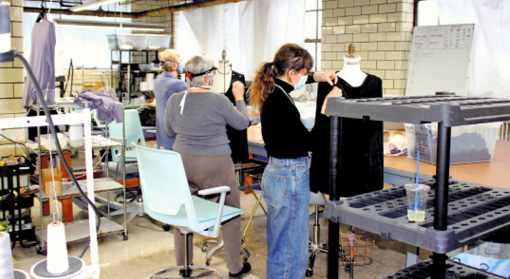
But from the outset, Sew Valley was a curious sort of company. Outwardly, it resembled any other small garment-manufacturing business. It had a modest-sized staff, a handful of commercial sewing machines and just enough clients to keep the doors of its 4,000-square-foot West End facility open. But there was something decidedly different about it, too. Sew Valley was incorporated a 501(c)(3) nonprofit.
Why?
Even the shortest of conversations with Kovacs or Maynard would reveal that they have far-reaching goals for their new venture. It’s not too much of an exaggeration to say that they wanted to revolutionize their industry from top to bottom, one step at a time. The goal? To encourage local fashion designers and manufacturers to do business in Cincinnati.
Everything started swimmingly, with Sew Valley providing a variety of development services and small-batch manufacturing for designers. While this sounds very traditional, the very fact that it was taking place in the center of an American city made it quite radical.
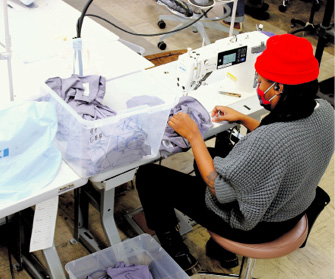
For the better part of 50 years, America’s garment-making industry has been high-tailing it to places like Bangladesh, Indonesia and, finally, China, which seems to have consumed the entire industry.
Two years after it launched, while many other companies stumbled due to the pandemic, Sew Valley persevered. Resilient. Plucky. Nimble. Decisive. Take your choice of adjectives. Each of them describes an aspect of Sew Valley’s business acumen that helped turn a potentially disastrous 2020 into a year filled with promise.
“It has been a very fruitful period for us,” says Kovacs, now the CEO. Not financially fruitful, but in terms of streamlining the company’s manufacturing processes the brief halt in operations at the beginning of the pandemic proved to be a godsend. “It made us reassess everything we did and how we did it.”
They quickly turned their manufacturing expertise to the production of masks and other PPEs. Not only did it provide them with a steady flow of income, but it also became a powerful fundraising tool, enabling them to provide free masks to thousands of at-risk and economically disadvantaged people.
Now that mega-manufacturers have moved into the PPE business, Sew Valley has returned its attention to designers and niche markets, where business is starting to grow again. Sew Valley has expanded its staff from eight to 11. It’s added more advanced equipment, things like an automatic cutting machine and 3D modeling software.
Now, they’re finding themselves tackling another issue. A shortage of skilled labor.
“We need more manpower,” says Maynard. “It’s hard to find people who know how to sew and want to work in manufacturing.”
Kovacs chimes in: “Everybody who knows how to sew is 75 or older.”
But Kovacs and Maynard have found a way to turn this hurdle into an opportunity.
Since Sew Valley’s beginnings, they have led intensive programs teaching people to sew, mostly for themselves. Next up for Sew Valley: a formal apprenticeship program, preparing people for careers in garment manufacturing.
